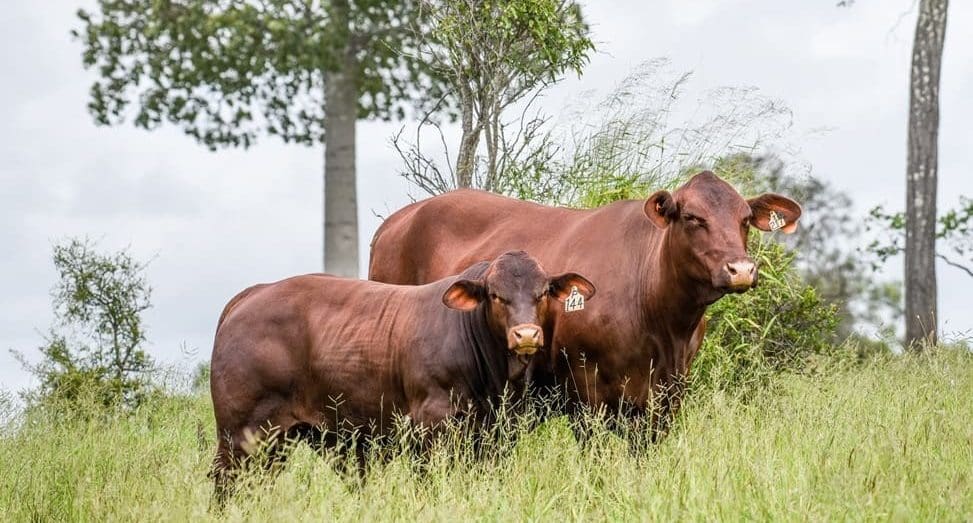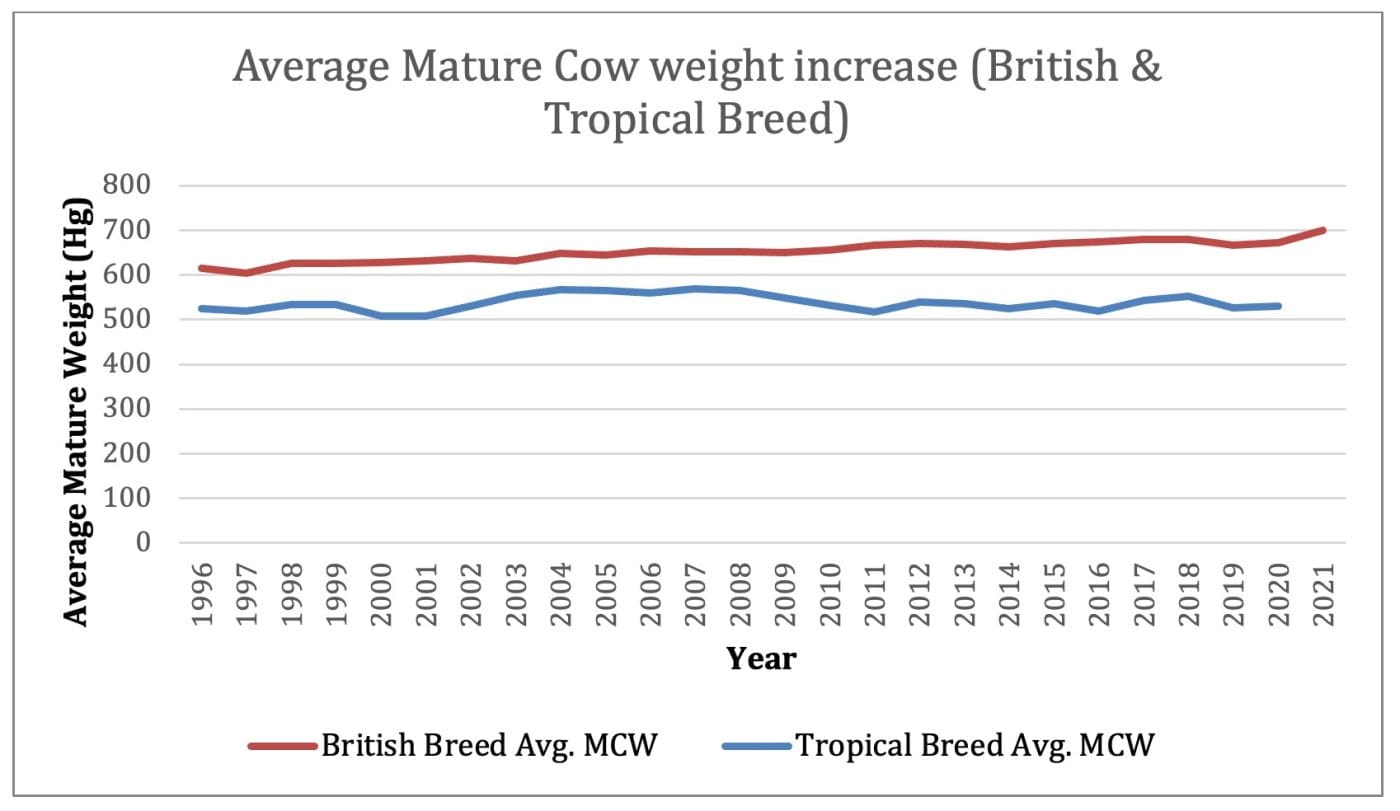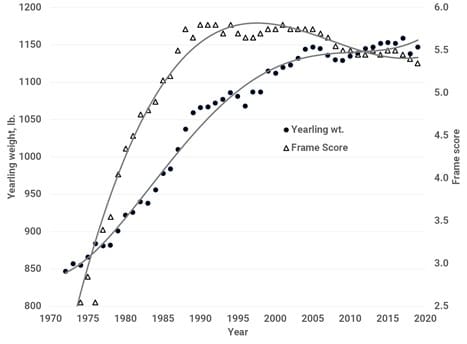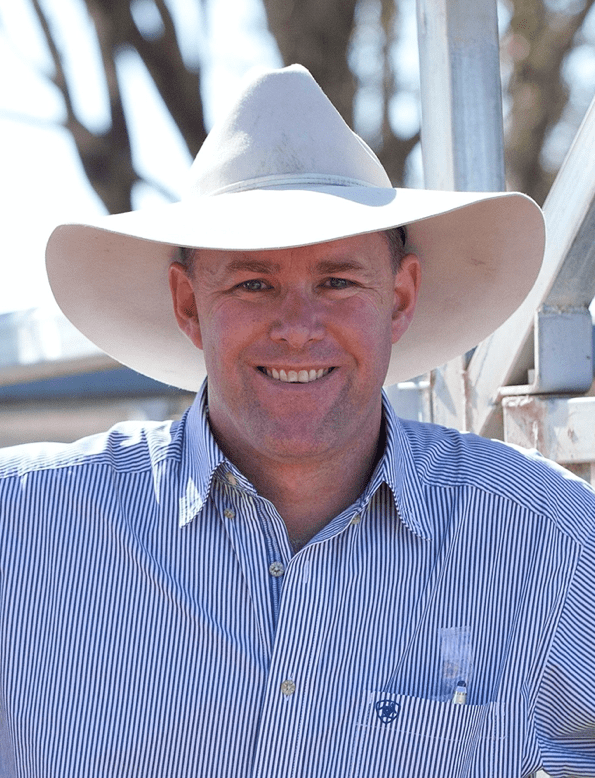
THE gradual increase in mature cow weights is not a phenomenon restricted only to Australia.
Internationally there has been a very clear trend of increasing mature cow weights in most beef breeds. In 2021 Dr Dan Burskirk from Michigan State University in the US published a paper questioning the current relevance of frame scores when considering the mature weights of most breeds.
Frame scores have been used extensively in Australia and Internationally to estimate growth curve and the eventual mature skeletal size of cattle. The NSW DPI first published a guide to using frame scores in the early 1980s with subsequent updates based on US research.
As part of the publications, standard age and height charts were also published to provide a guide to producers using frame score as part of their selection.
However, in the past 40 years, much has changed. Cattle are now proven to be significantly heavier than those used in the initial research & development of these standard scores. The increase in average weight of Angus cows has been the focus of discussion in recent years.
However, the trend for increased mature cow weights is also evident across breeds and breed types. Looking at two examples (see table below) using data provided by ABRI for a British and a tropical beef breed society, the ongoing increase in mature weight is very evident.

Looking over the data, the average British bred cow in 2021 has a mature weight that is 85kg heavier than in 1996. That represents an average increase of 3.4kg every year.
In the Tropical breed, the average increase is much lower over the same period, to be around 6kg heavier than in 1996.
With this data in mind, perhaps it is time to reconsider the value of current frame score standards. It is tempting to suggest that frame scoring is a practice that may no longer have much value for the industry.
On the surface this argument is very valid, as performance data and genetic evaluations are much more effective and accurate in predicting the growth potential and expected weight increases or changes at key lifetime points.
It is much more effective to consider EBVs for mature cow weight, or for 400-day weight than relying on the frame score of an animal as a predictor of future weight.
However, it is equally important to recognise that not all producers and breeders are regular users of BreedPlan data or data provided by other genetic evaluation systems such as IGS.
There are still many producers using frame scores as part of their assessment and selection of cattle. With this in mind, perhaps there is a need for a conversation to take place regarding an update of frame scores and to revisit the data to ensure the tool can be used with confidence when looking at modern cattle.
Underscoring this discussion is a point raised by Dr Burskirk in the US. He notes that the past 20 years have seen a steady decline in US frame scores while at the same time yearling weights have actually increased. Considering data collected by the American Angus Association, this is an interesting trend to factor into the conversation.

Changes in frame score and weight for bulls registered with the American Angus Association: Dr Dan Buskirk MSU Extension (Feedlot Magazine)
Effectively what this data suggests is that while cattle are unquestionably becoming heavier, a result of selection pressure to meet weight for age targets, they may not necessarily also become larger framed.
Attempting to understand the data and what this means for producers who use frame scores in selection is a challenge, as data is somewhat limited on contemporary cow weights and frame scores. However, data from the US Meat Animal Research Centre, collected on 12 breed types showed an average variation of 51kg between Frame Scores.
Making accurate decisions
What we do know is that modern cattle have changed so significantly, that producers who rely on frame scores and standards as a selection tool may actually be making very inaccurate decisions.
The implications range from selection of cattle that are actually heavier than the frame scores in use predict will require more feed, as well as failing to meet optimum market specifications.
There are two key points to consider in the conversation around frame scores. The first is for those producers and breeders who rely on frame scores to be aware these standards are now likely to be incorrect and of very little use in making accurate selection decisions.
If frame scores are still a tool that producers and breeders are reliant upon, then the industry may need to start considering how data can be collected to bring standards up to date.
The second point, however, is to recognise that frame scores were developed initially almost 50 years ago, and the industry now possesses much more accurate tools to predict future weights and performances.
Performance data, such as BreedPlan or IGS, are a much better predictor of wight and mature size and can be used with much greater confidence and accuracy for the industry’s current generation of cattle.
 Alastair Rayner is the Principal of RaynerAg, an agricultural advisory service based in NSW. RaynerAg is affiliated with BJA Stock & Station Agents. He regularly lists and sell cattle for clients as well attending bull sales to support client purchases. Alastair provides pre-sale selections and classifications for seedstock producers in NSW, Qld, and Victoria. He can be contacted here or through his website www.raynerag.com.au
Alastair Rayner is the Principal of RaynerAg, an agricultural advisory service based in NSW. RaynerAg is affiliated with BJA Stock & Station Agents. He regularly lists and sell cattle for clients as well attending bull sales to support client purchases. Alastair provides pre-sale selections and classifications for seedstock producers in NSW, Qld, and Victoria. He can be contacted here or through his website www.raynerag.com.au
